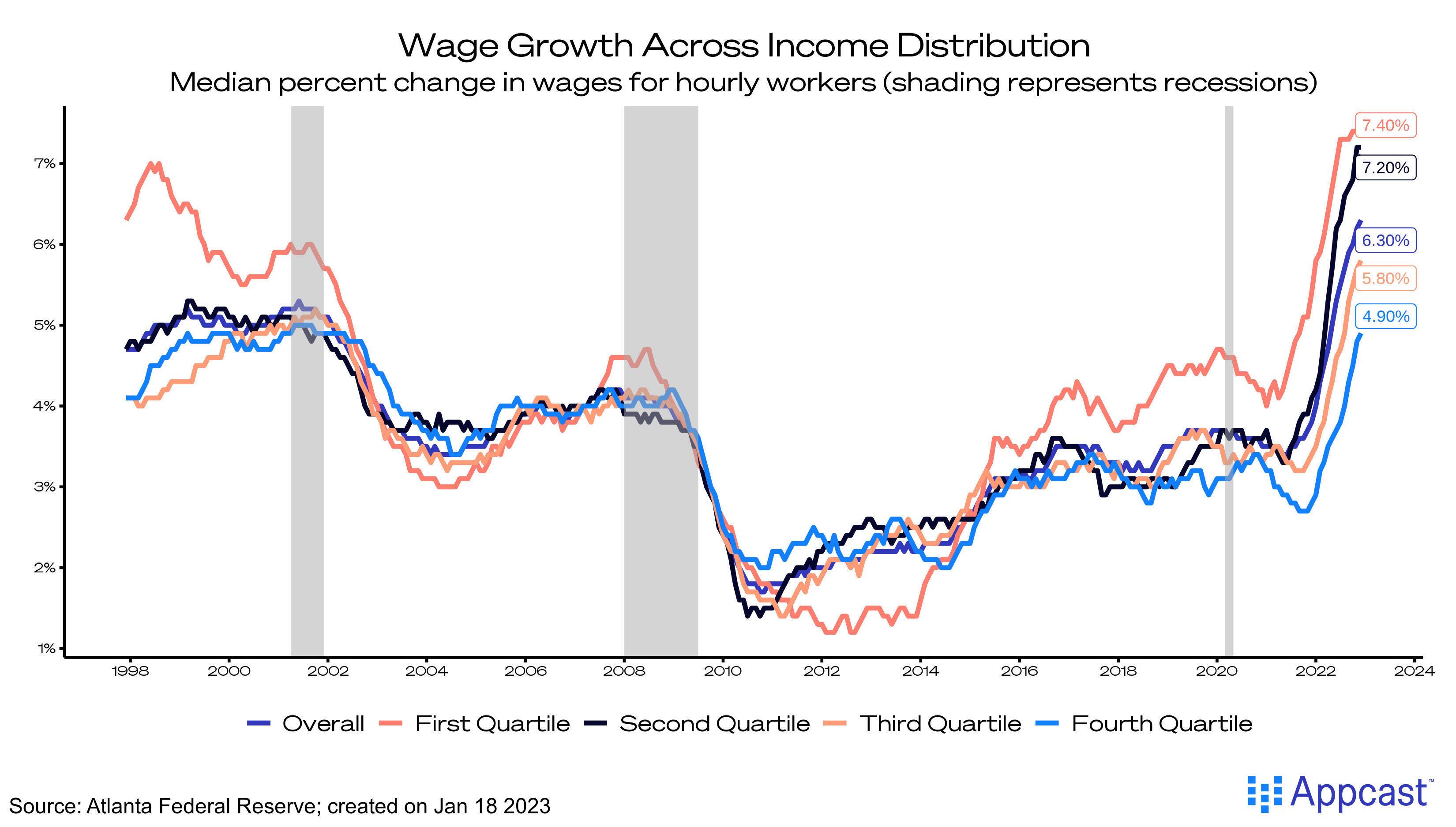In recent years, the economy’s low-wage workers have experienced the most robust wage gains, closing the gap between the highest and lowest quartiles and compressing the labor market. To note, these gains are nominal and do not account for the rapid pace of inflation in the past year.

It’s not just low-wage workers who have seen strong nominal wage gains. Spurred by the so-called “Great Resignation,” job-switchers are notching impressive pay increases as well. Job switchers have dramatically outperformed job stayers in wage growth. From December 2020 to December 2022, the gap between the two widened by 1.1 percentage points.
While distinct, these trends are not independent; workers in lower-wage positions switch jobs more frequently. For example, the quits rate for leisure and hospitality reached a series-high of 6.1% in 2021. In comparison, professional and business services peaked at 3.8%.
Both trends were emphasized by the “tight” overall labor market and the intensified competition for talent.

While the first quartile earners made impressive wage gains, higher earners instead gained new ways to work from the competitive market – more flexible hours and workplaces adapted for better work-life balance.
For the first time in decades, wages are rising faster for the bottom quartile of earners. High demand, increased competition for workers, and high turnover rates are all allowing for this reversal of a decades-long trend. But can it last as labor market pressures fall?
As the Fed continues to hike interest rates to fight inflation, the competition for workers may decrease, slowing these wage gains. So far though, the decreased demand for workers has mostly hit white-collar professions. Intense competition for workers may continue in these lower-earning professions, allowing these historic nominal gains to continue.







